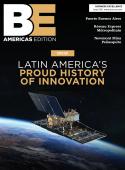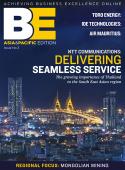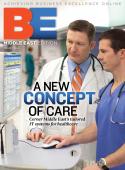An eye to the sky┬áAs airports across the globe search for extra revenue opportunities, British ColumbiaÔÇÖs Vancouver International Airport (YVR) has a new master plan for airport development, reports Brendan A. Smith. When Vancouver International Airport Authority assumed control of YVR in 1992 from Transport Canada, it embraced a vision to become a premier global gateway. CanadaÔÇÖs second busiest airport by volume after Toronto Pearson, YVR handled 9.9 million passengers in 1992, but has seen an 80 percent increase in traffic to over 17 million in 2007, when it also carried 226,234 tonnes of cargo and witnessed 274,410 runway take-offs and landings. Current annual runway capacity is for 400,000 take-offs and landings, but projections indicate that the airport will need to accommodate 484,000 aircraft by 2027.Growth of this magnitude requires a strategy, and YVR is now following a 20 year master plan that takes the airport through a number of developments up to 2027, involving a total planned investment of C$4.2 billion. As the nearest North American airport to Asia and the Pacific region, YVR is perfectly placed to develop itself as an international gateway to secure a greater volume of air traffic than the local market alone could support, with the potential to attract tourists and businesses to British Columbia, creating economic activity, and with it, jobs.The master plan includes major additions and modifications across all the airportÔÇÖs facilities. The domestic terminal has already undergone a refurbishment and projects are now underway to improve the international terminal and the south terminal.The largest single project is the C$420 million expansion of the international terminal. Phase one, opened in June 2007, includes four new gates, two of which have been designed to handle larger modern aircraft like the Boeing 787 and the Airbus A380. An additional five gates are scheduled for completion at the end of phase two in 2009. Building upon YVRÔÇÖs distinctive design tradition, the ÔÇ£West WingÔÇØ addition to the International Terminal has been designed with a provincial British Columbia theme, which includes native carvings and a thematic water feature representing a meandering creek that leads to one of the largest indoor aquariums in North America. Another integral part of the structural expansion is the new C$117-million five-story link building, connecting the international and domestic terminals to expedite pedestrian traffic, and will include elevators, escalators and moving walkways, plus new security and communications systems. The link building will also provide increased international check-in capacity, passenger screening, additional baggage systems and office space. A major new retail development is also being planned, with new stores and restaurants being added to YVRÔÇÖs award-winning retail program in both the domestic and international terminals.YVR is also contributing up to C$300 million for the airport element of the C$2 billion Canada Line project, a new rail transit system linking the airport to Richmond and the downtown area of Vancouver, which is planned to be completed by November 2009 in time for the 2010 Winter Olympics. Airport access for passengers, employees and commercial traffic is currently shared with other local traffic, including Vancouver-Richmond commuters. With the expected growth in passenger numbers, and the number of airport employees expected to rise from 26,000 today to 41,000 by 2027, the 19-kilometer Canada Line will offer the equivalent of ten lanes of highway to provide the city and surrounding areas with an economical alternative to the automobile.┬á The airport segment of the Canada Line will include 1.9 kilometers of elevated guideway, 1.7 km of at-grade guideway, a new bridge, partial reconstruction of the North Service Road, construction of the Templeton overpass and associated roadways, and construction of three Canada Line stations. An extra station is also planned to serve another new terminal building in the future.The master plan also includes additional supply and storage capacity for aviation fuel to meet the increasing demand and maintain the operational reserve at the required four-day supply level. There will also be improvements to the taxiways to enhance aircraft flow on the airfield, increase efficiency and reduce costs and aircraft emissions.By 2025, there could also be a new runway, depending upon passenger growth and the size of aircraft using the airport. ÔÇô Editorial research by Jim Rose┬á









